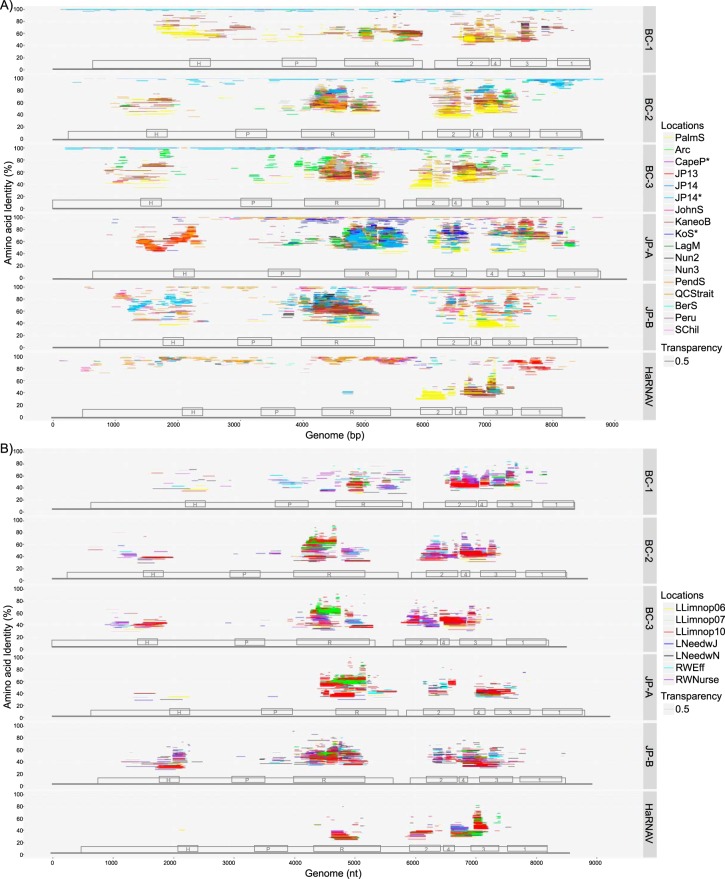FIG 2.
Sequences mapping to the six marine RNA viruses in the environmental viral metagenomic data sets. Fragments were recruited from marine RNA virus metagenomic data sets that were either generated during this study (Arctic [Arc], Cape Point [CapeP], Jericho Pier 13/14 [JP], Johnstone Strait [JohnS], Kenton-on-Sea [KoS], Laguna Madre [LagM], Nunavut 2/3 [Nun], Pendrell Sound [PendS], Queen Charlotte Strait [QCStrait], Bering Sea [BerS], Peru, and South Chile [SChil]) or from one of the publicly available metagenomic data sets, namely, Palmer Station (PalmS; Antarctica) or Kaneohe Bay (KaneoB; Hawaii) (A) or were from three freshwater data sets from Lake Limnopolar (LLimnop; Antarctica), Lake Needwood (LNeedw; MD, USA), and reclaimed water from Florida (RWEff and RWNurse; USA) (B). Metagenomic reads were recruited against each of the six virus genomes using tBLASTx with an E value of 10−10. The position of the colored bars on the y axis indicates the percent amino acid sequence identity to the virus, while the width of the bar covers the region of the genome where the similarity was observed. The bars are displayed at 0.5 transparency so that overlap among locations can be observed. Genome maps for each virus are superimposed on the plot with the domains labeled as follows: H, helicase; P, protease; R, RNA-dependent RNA polymerase; and 1, 2, 3, and 4, capsid VP1, VP2, VP3, and VP4, respectively.

